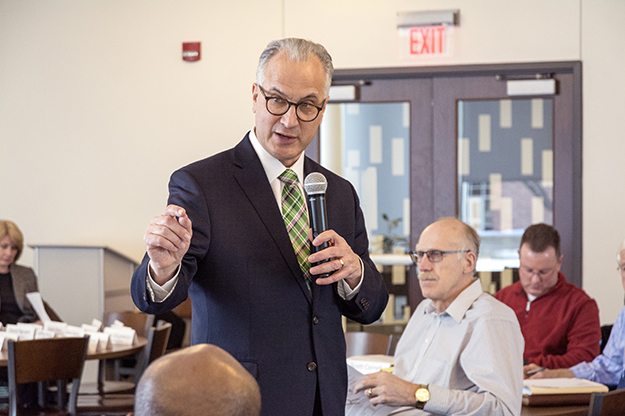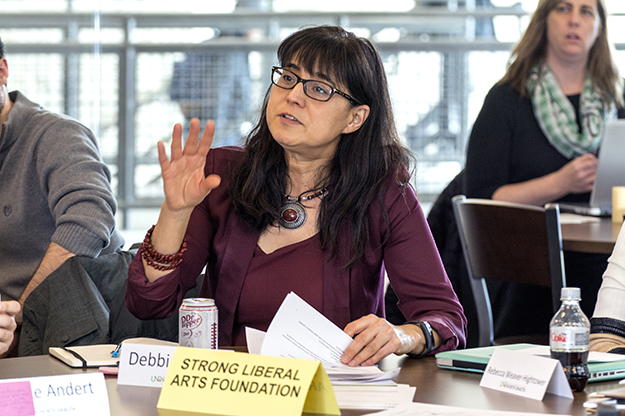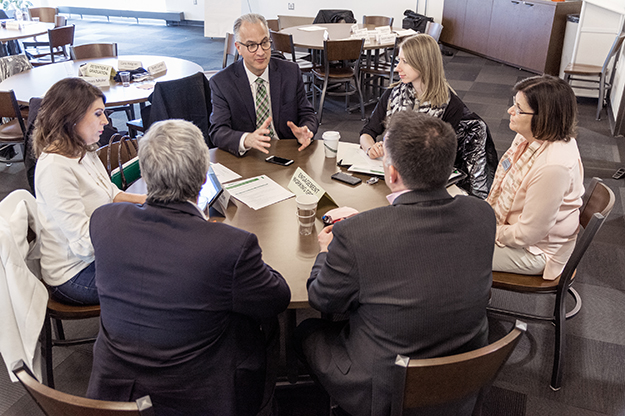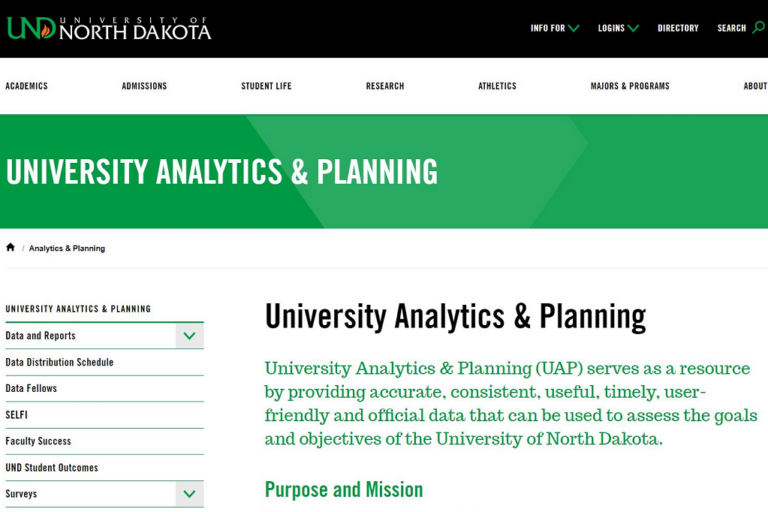Investing in priorities
UND’s Strategic Planning Committee forming campus goals to guide progress in a time of budget restraints

When UND’s Strategic Planning Committee met for the first time last fall, they knew their charge was a lofty one—setting the course for the premier flagship University in the Northern Plains by establishing core values as the foundation of campus priorities.
They didn’t know just how integral those determinations would be in the months to come.
“There is never a more important time to understand one’s strategic priorities than during a time of tight budgets,” UND President Mark Kennedy said. “It is essential to protect priorities that are vital to future success.”
As UND faces a proposed 20 percent decrease in state funding, the Strategic Planning Committee has its eye on the horizon, identifying what investments in key priority areas would allow it to better fulfill the purpose of the University—delivering opportunity through learning, discovery and engagement.
“The investment isn’t always new dollars,” said Strategic Planning Committee co-chair Laurie Betting. “It might be, but it might be retooling or repackaging how we do some things on campus.”
At this point in planning, an estimated $7 million in investments are believed to offer a significant payback by benefiting students, while attracting more students and research to UND.
Research and discussion by the committee found that doubling efforts to ensure students master key intellectual skills and graduate in a timely manner would simultaneously benefit graduates and enhance UND’s attractiveness as a place to study. A robust marketing effort would attract more high quality students to benefit from UND’s programs. Upgraded High Performance Computing capabilities and the creation of an Unmanned Institute would enable interdisciplinary research opportunities that help move the state beyond oil and soil.
“A good strategic plan represents a commonly developed vision for where the University wants to be in the future,” said UND Associate Vice President for Academic Affairs Steven Light. “When a strategic planning process comes together well and coalesces into a common vision, and we all agree we’re going to head in that direction, we’re going to invest our time, or talent and our treasure to get there.”

Market and research
One of the goals set by the Strategic Planning Committee is boosting stagnant enrollment numbers. To do so, the committee has suggested an emphasis on marketing—earmarking funds for a branding study, increased advertising, and a website upgrade that would make UND.edu more reactive and mobile-friendly. Increased tuition revenue from the resulting enrollment growth would be available to invest in other priorities.
“It helps us differentiate ourselves in a highly competitive environment. It allows us to better showcase our strengths,” said Strategic Planning Committee co-chair Dana Harsell.
The committee is also developing a set of five “Grand Challenges” on which to base the campus’ multidisciplinary research efforts. These are issues that are critically important to the region and the world that UND is poised to solve, such as promoting energy security, helping rural communities with health and social issues and focusing on research in cancer, neurodegeneration and infectious disease.
“Faculty want to make some real difference, whether it’s through teaching or their research or a combination of the two,” Harsell said. “Grand Challenges provide real opportunities for their work to make a critical difference in somebody’s life or some aspect of society.”
The proposed Grand Challenges also include driving developments in Big Data, cybersecurity and Unmanned Systems. For increased research in these areas, UND is looking to invest in a North Dakota University System initiative led by Chancellor Mark Hagerott called NexusND, which would bring more High Performance Computing and cybersecurity infrastructure and experts to campus.
“We have a premier strength in UAS—we’re going to build on that,” Light said. “The Chancellor’s vision is this triangle where, in order to do things with UAS, you have to be able to collect data, analyze data and make sure that data is secure in transmission. Cyber and big data would be areas of investment for UND, and we can make it a truly multidisciplinary effort—thinking about UAS policy and regulation, how UAS impacts communities, how data and security feeds into that.”

Moving forward
The work of the Strategic Planning Committee is far from done, and the strategic plan itself is still a work in progress—no final decisions on exact investments have been made. But the priorities that the team has set will play a large role in budget decisions to be made in the coming weeks.
“Given the immense pressures that come with the budget reductions, and given their already increased workloads, I couldn’t ask for a better group of engaged people who are trying to look to the future of how we position the University of North Dakota,” Betting said.
“I have been impressed with the degree to which the Strategic Planning Committee has reached out broadly across campus for input and how they have earnestly pursued actions to elevate UND’s status as a premier flagship,” Kennedy said.
More Campus fora will be held in the coming weeks to discuss the latest updates to the evolving strategic plan. More information can be found at the UND Strategic Planning website.


